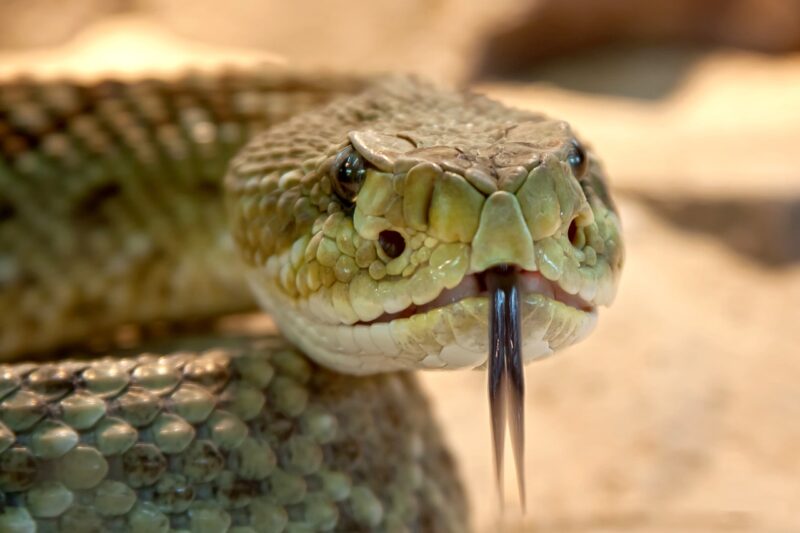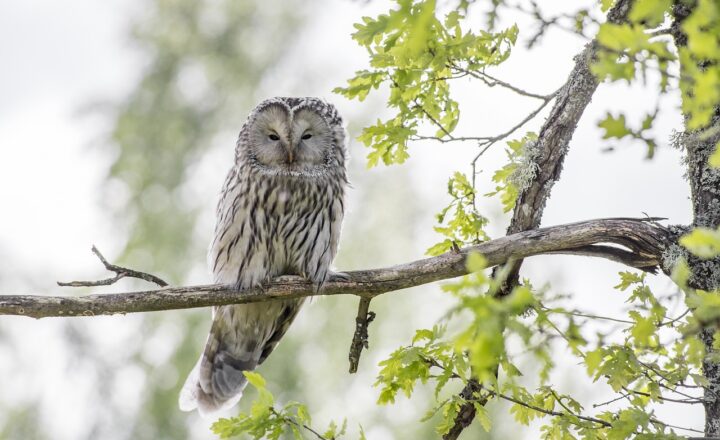Why Some Animals Evolve to Be Venomous While Others Rely on Camouflage
November 12, 2024

The natural world is a tapestry of survival strategies. Two prominent techniques that many species have adopted are venom and camouflage. These adaptations allow animals to thrive in various environments, but why do some choose venom while others depend on disguise? Understanding the divergent evolutionary paths of venomous and camouflaged animals grants us insight into the complexities of survival in nature.
1. The Role of Venom in Survival
Venom is a biological substance that some animals produce to immobilize or kill prey and defend against predators. The evolution of venom can be likened to developing a highly specialized tool to gain a competitive edge in the predatory game. Predators like snakes, spiders, and certain fish have capitalized on this evolutionary trait for several reasons:
- Efficient Hunting: Venomous animals can immobilize prey quickly and effectively, allowing for easier consumption. For instance, a venomous snake can strike and subdue its prey in a matter of seconds, minimizing its risk of injury during hunting.
- Defensive Mechanism: Venom not only aids in hunting but also serves as a powerful deterrent against predators. Many venomous species, such as the Eastern Diamondback rattlesnake, are typically left alone due to the fear instilled by their potent venom.
- Evolutionary Adaptation: The production of venom can offer a significant advantage in competitive environments. Species that develop effective venoms may outcompete other species for food sources, leading to a greater likelihood of survival and reproduction.
Thus, the evolution of venom can be seen as a multi-faceted tool that enhances the survival odds of an organism, allowing venomous species to thrive in challenging environments.
2. The Art of Camouflage
While venomous animals opt for aggression and speed, many creatures rely on disguise—becoming invisible in plain sight. Camouflage serves as a form of concealment that aids in either predation or evasion of predators. This survival strategy can be observed in numerous animals, such as chameleons, cuttlefish, and stick insects. Some key aspects of camouflage include:
- Stealthy Approach: For predators that rely on stealth, blending into the environment enables them to surprise their prey. The octopus, well-known for its color-changing ability, can disguise itself among corals or rocky seafloors, making it an effective ambush predator.
- Avoiding Detection: For prey animals, camouflage acts as a life-saving shield. Creatures like the peppered moth and leaf-tailed gecko have developed patterns and shapes that allow them to seamlessly blend into their surroundings, evading detection from hungry predators.
- Adaptation to Environment: Camouflage is typically reliant on the environment, being shaped according to local habitats. Animals living in forests may adapt to shades of green and brown, while those in sandy deserts might develop light-colored, textured skins to match their surroundings.
In essence, the evolutionary path of camouflage provides not just survival, but also a unique way of waiting for the right moment to secure a meal or avoid becoming one.
3. Evolutionary Trade-offs: Venom vs. Camouflage
The choice between evolving venom or becoming camouflaged is often determined by various ecological and evolutionary factors:
- Ecological Niche: The ecological niche of a species shapes its physical and behavioral adaptations. In high-predation environments, being venomous might furnish a substantial advantage, while in areas with abundant cover and minimal competition, camouflage might be favored instead.
- Resource Availability: The availability of prey and the presence of competition can dictate whether venom or camouflage is more beneficial. Locations rich in diverse prey may promote venom development, while resource-scarce areas may favor the stealth of camouflage for successful foraging.
- Predator-Prey Dynamics: In ecosystems where predator and prey continuously evolve against each other, the strategies of venom and camouflage can influence one another. If a predator develops resistance to a certain venom, prey that rely on venom might risk extinction, leading to a potential shift towards reliance on camouflage.
Thus, the evolutionary divergence between venomous and camouflaged organisms illustrates the intricate and interdependent nature of ecological relationships—both at the predation level and among various species’ survival strategies.
4. Highlighting Examples: Venomous and Camouflaged Creatures
To further illustrate these adaptations, let’s delve deeper into a few intriguing examples:
Venomous Creatures
– Box Jellyfish: Known as one of the most venomous creatures in the world, its tentacles contain toxins that can cause severe pain or death in humans with just a single touch. Its fluid, transparent body helps it blend into the ocean, creating a dual advantage of camouflage and venom.
– Cone Snail: This marine snail produces a potent toxin that can paralyze fish, enabling it to feed effectively. The snail’s shell also mimics colors that are common in its habitat, enhancing its hunting capability.
– Black Widow Spider: This arachnid employs venom to subdue its prey—primarily insects. Its distinctive black body with red markings serves as a warning coloration to potential predators, indicating danger.
Camouflaged Creatures
– Leaf-Tailed Gecko: This reptile’s flat, leaf-like body allows it to blend seamlessly into forest foliage, often tricking prey and predator alike.
– Chameleon: Not only does it utilize color-changing abilities for social interactions, but this reptile also camouflages itself to escape potential threats, utilizing its sticky tongue to catch unsuspecting insects.
– Stonefish: This fish utilizes its extraordinary ability to mimic the seafloor, rendering it almost invisible. Despite its lack of venom, it possesses venomous spines that can deliver excruciating pain, making it both camouflaged and hazardous.
These examples affirm the importance of both adaptations in the ongoing struggle for existence in the wild.
5. Conclusion: Nature’s Complex Balance
The evolutionary paths of venomous weapons and the art of camouflage grant animals distinct advantages in their respective ecosystems. The reliance on venom signifies a forceful approach to survival, while camouflage highlights the importance of patience and subtleness. Nature’s intricate balance manifests in how these strategies not only define individual survival but also shape entire ecosystems and interspecies relationships. As we continue to study and understand these adaptations, we can garner greater appreciation for the incredible diversity of life on our planet—a diversity marked not just by differences in appearance, but in survival philosophy.








